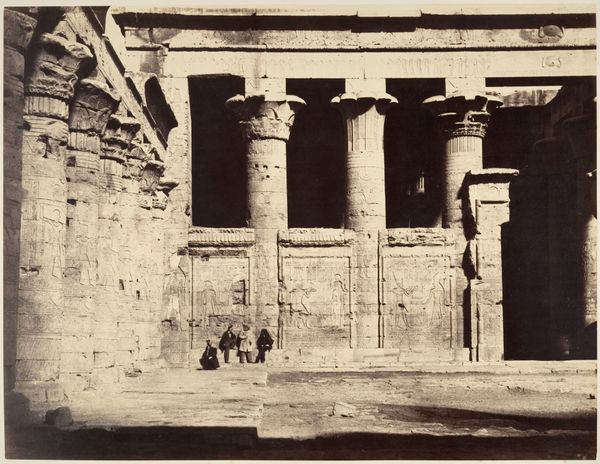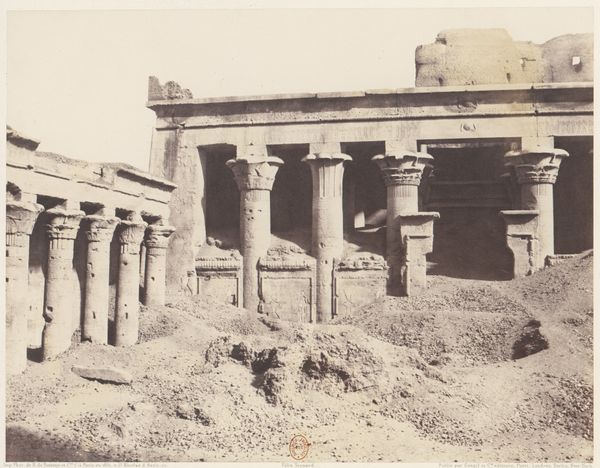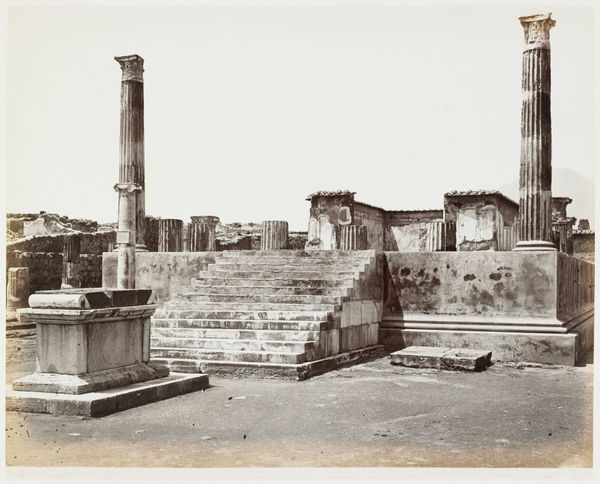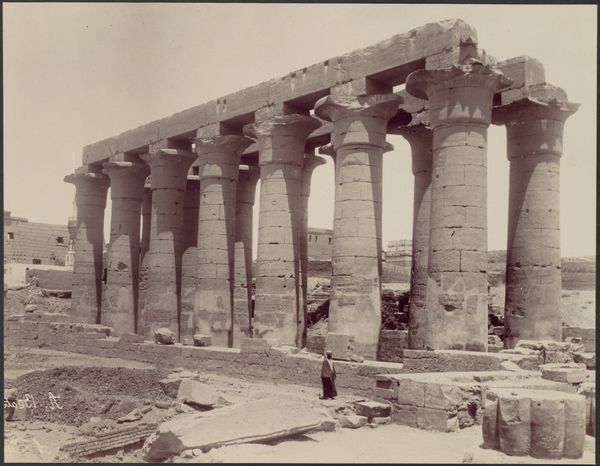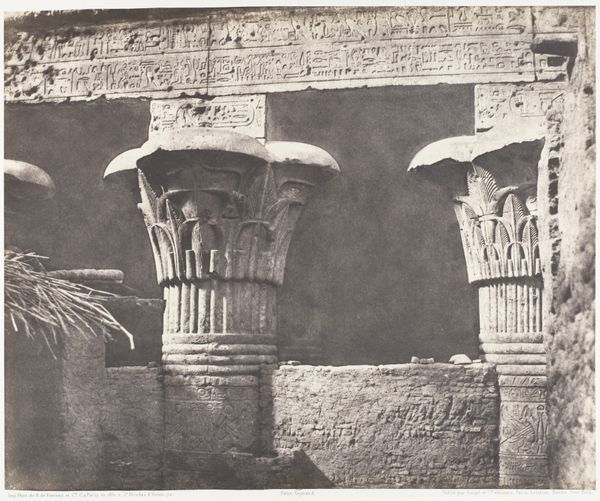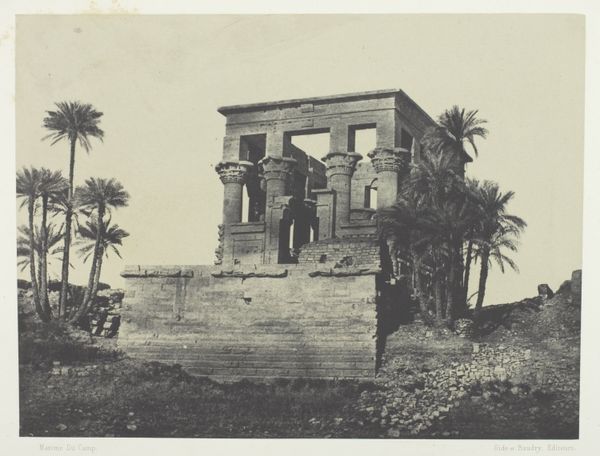
print, photography, gelatin-silver-print, architecture
#
print photography
# print
#
landscape
#
classical-realism
#
ancient-egyptian-art
#
photography
#
gelatin-silver-print
#
architecture
Dimensions: Image: 15 in. × 18 3/4 in. (38.1 × 47.6 cm)
Copyright: Public Domain
Curator: Francis Frith captured this gelatin silver print, titled "The Hypaethral Temple, Philae" in 1858. Editor: There’s a quiet dignity to it, even in monochrome. It speaks of endurance, doesn't it? The strong horizontal lines emphasize the building's stability, a testament to human effort resisting time’s erosion. Curator: Indeed. Temples in ancient Egypt weren't merely buildings; they were earthly reflections of divine order, potent symbols linking the world of humans and gods. Philae, in particular, was dedicated to Isis, a maternal symbol of rebirth and protection. Editor: Which takes me immediately to thinking about gender roles of that era, a very interesting and unique feature of Egyptian culture. Temples dedicated to goddesses—like Isis at Philae—held an exceptionally crucial societal position, symbolizing matriarchal values that, at the time, were significantly different compared to gender structures of other cultures, no? Curator: Certainly, Isis embodies concepts central to Egyptian belief—magic, motherhood, devotion—themes resonating deeply with worshippers through symbolic representations like those found in Philae’s ruins. Even this photograph allows a sense of continuity to permeate; look at the columns – even damaged, they suggest the strength of belief. Editor: But this classical-realism style has an interesting way of depicting ancient times. Even the date this was taken in the mid-19th century raises some concerns. Was this Orientalist at all, do you think? To what degree does the aestheticized ruin exoticize ancient cultures? Curator: It is a point well worth exploring. Frith, of course, came as a Westerner to a land that had captured the imagination of Europe, so his framing inherently bears his perspective. And yet, his work allowed a wider audience access to these sites, shaping cultural memory itself. It became part of the modern identity of Egypt. Editor: So in effect, photos like this create a cultural feedback loop. The way people perceived Egyptian art began to change. What they understood from their imagery gained more nuance over time because of the ways photography and other forms of art shared it. Curator: Precisely. Art becomes this iterative process of revealing, interpreting, and remembering, each contribution layered upon the last, adding dimension and prompting reflection on continuity and transformation. Editor: A photographic journey then, a meditation on cultural exchange and interpretation, captured in a single, enduring image.
Comments
No comments
Be the first to comment and join the conversation on the ultimate creative platform.
